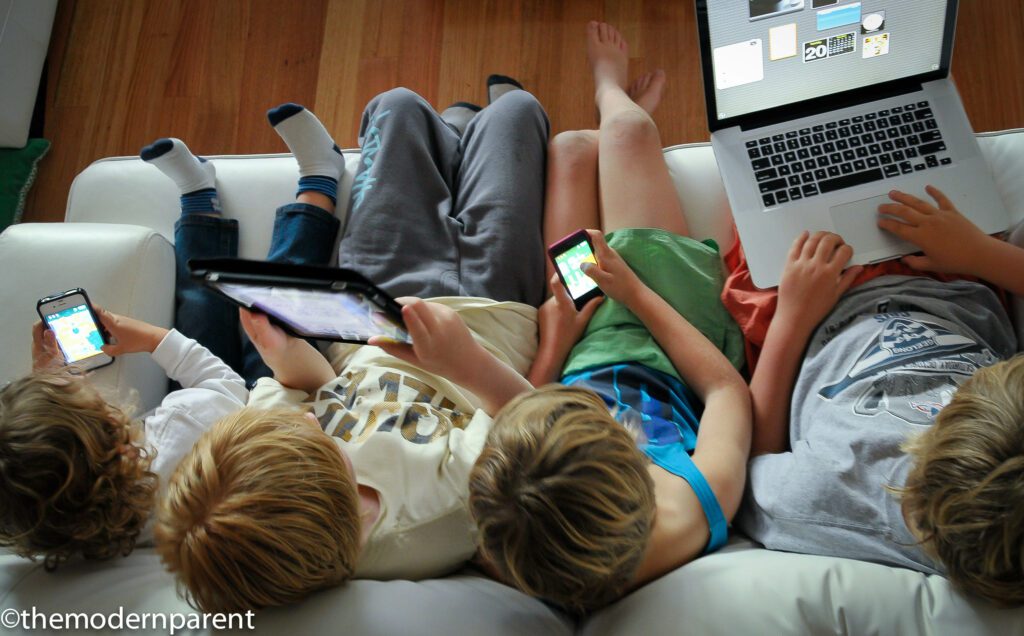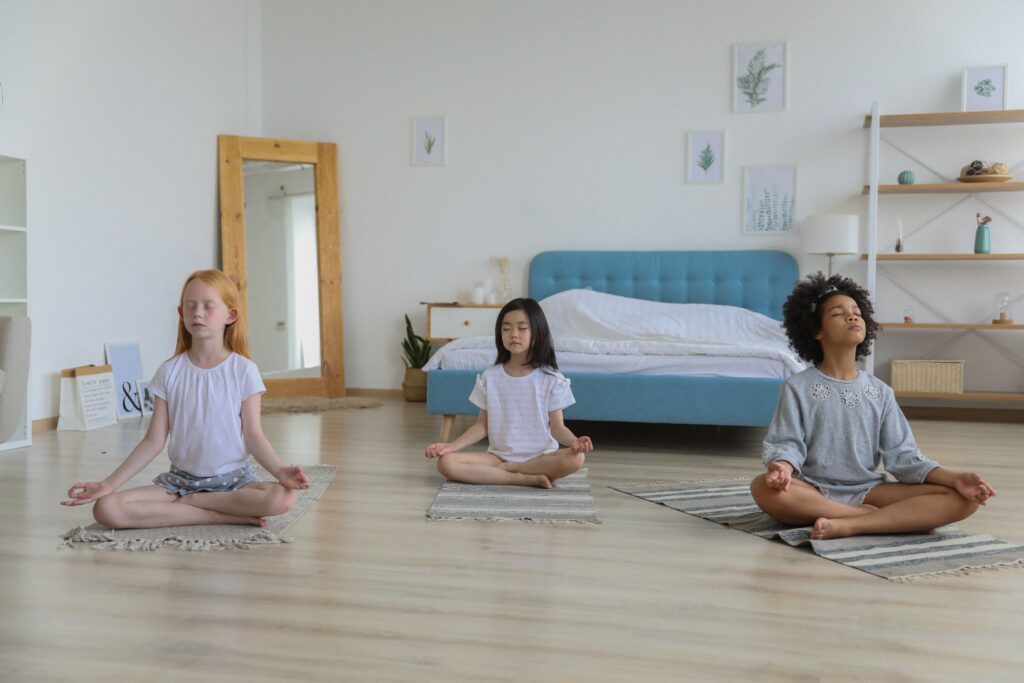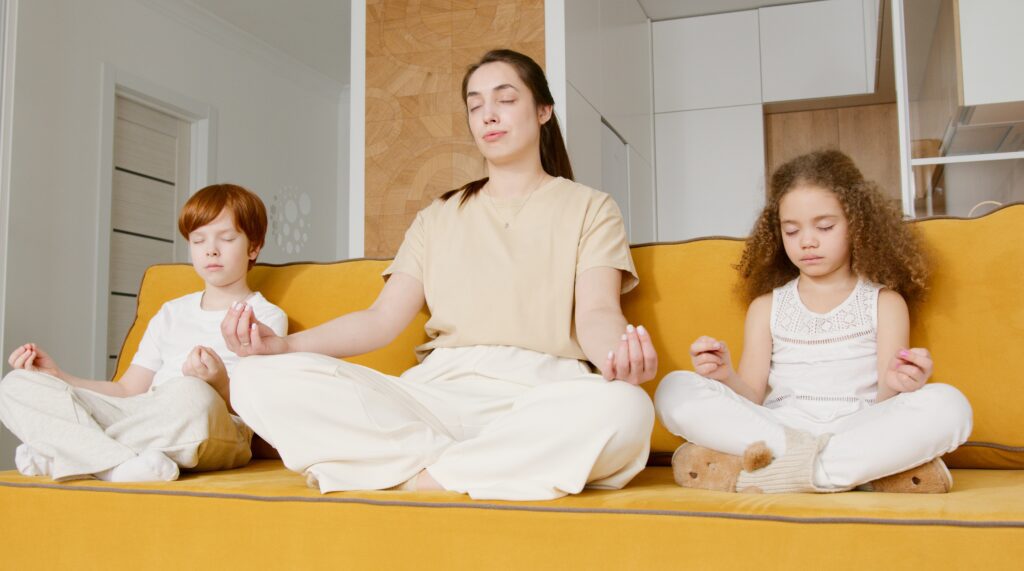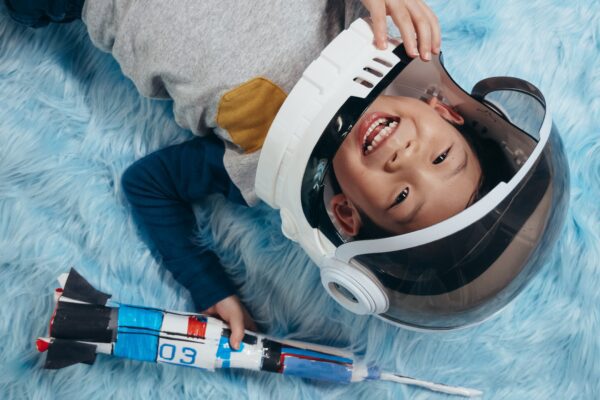In today’s fast-paced and demanding world, children are facing higher levels of stress and pressure than ever before. As a result, they may experience difficulties such as anxiety, depression, low self-esteem, and behavior problems. However, there is a powerful tool that can help transform children’s lives.
Yes, we’re talking about meditation! This age-old technique has taken the modern world by storm, offering children of all ages a much-needed respite from the chaos around them.
Studies have shown that meditation can have a profound impact on children’s well-being. It helps them develop pro-social behaviors, improve focus and concentration, regulate emotions, and foster compassion and self-esteem.
We will delve into various ways in which meditation can transform children’s lives and provide practical tips for getting started. So, if you’re ready to empower your child with the tools for a happier and healthier life, keep reading.

The Rising Stress Levels in Children
Children today are faced with academic pressure, social media, peer relationships, and familial expectations, contributing to their stress levels. According to studies, children are experiencing symptoms of anxiety, depression, and difficulty managing emotions at younger ages.
Meditation has emerged as a powerful tool to help children cope with stress and improve their overall well-being. Children can learn meditation techniques to relax their bodies and minds, develop self-awareness, manage their emotions, and cultivate a sense of inner calm.
The Benefits of Meditation for Children
Meditation offers numerous benefits for children, helping them navigate the challenges of daily life and fostering their overall well-being.
Reducing stress and anxiety levels: Children face various stressors, such as school, social pressures, and extracurricular activities. Meditation helps them relax, calm their minds, and manage stress more effectively.
Emotional regulation: By practicing meditation, children can learn to be more aware of their emotions. They will develop strategies to cope with difficult feelings and handle challenging situations with greater ease.
Improved focus and concentration: Meditation enhances a child’s ability to concentrate and stay focused, which can lead to improved mental performance and positively impact their academic performance.
Enhanced creativity: Regular meditation practice stimulates the imagination, allowing children to tap into their creative potential.
Increased self-awareness: Meditation helps children become more in tune with their thoughts, feelings, and sensations, promoting a greater sense of self-awareness.
Boosting self-esteem: Meditation fosters a sense of inner peace and self-acceptance, promoting a positive self-image and higher self-esteem in children.
Improved sleep: Meditation techniques help children relax and unwind, improving the quality of their sleep and promoting overall well-being.
Improving social skills: Through meditation, children learn to cultivate qualities like empathy, kindness, and compassion, which enhance their interpersonal relationships and overall social skills.

www.pexels.com
Guided Meditation
There are various guided meditation techniques that are suitable for children.
Body Scan: Get your child to imagine a little scanner going from the top of their head down to their toes. As it scans each part of their body, ask them to focus on how it feels. Encourage them to notice any sensations or tension and let it go.
Guided Visualization: Children are the ultimate dreamers. They can spend hours lost in their little world, imagining all sorts of fantastical scenarios. Using their strength in visualization is a powerful technique to help children relax their minds during meditation. Guide them through vivid imagery, such as a beach or a meadow, where they feel safe and relaxed. Encourage them to use all their senses to make it enjoyable.
Mindful Breathing: This involves focusing on the breath. Find a quiet and comfortable spot to sit or lie down with your child, then inhale and exhale slowly and deeply. Teach your child different breathing techniques, such as deep belly breathing or counting breaths. Guide them to focus on their breath as a way to calm their mind and body.
Mindful Listening: Encourage your child to close their eyes and focus on the sounds around them. Help them notice the different sounds and bring their attention back to the present moment whenever their mind wanders.

www.flickr.com
Mantra Meditation
Introducing children to simple mantras or positive affirmations can be a fun way to engage them in meditation. Repeating phrases or words is a common technique used in meditation to help children focus and relax.
Mantras can be as simple as “peace,” “calm,” or “I am enough.”
This repetition helps bring them back to the present, calm their minds, reduce distractions, and promote a sense of inner peace and relaxation.
Affirmations for children are like a daily dose of vitamins for their self-esteem. Incorporating fun and uplifting mantras can engage and entertain children, making the practice more enjoyable. These mantras can be repeated silently or out loud, encouraging children to focus on positive thoughts and affirmations.

www.flickr.com
Mindfulness Meditation
Being fully present in the moment
Being fully present in the moment is a key aspect of meditation for children. This means paying attention to what is happening right now, without judgment or distraction. It’s like they become mini-Buddhas, with the power to stay calm and centred in the face of chaos. Meditation exercises such as deep breathing, body scans, or visualizations help children become more mindful and develop greater self-awareness.
Incorporating mindfulness into everyday activities
Morning Routine: Encourage children to start the day with a few moments of mindful breathing or a short meditation to set a positive and calm tone for the day ahead.
Mealtime: Teach children to eat mindfully by engaging their senses, paying attention to the flavours and textures of their food, and taking the time to savour each bite.
Walking and Nature: Encourage children to take mindful walks, paying attention to the sensations in their bodies and the sights, sounds, and smells around them. This can be done in a local park.
Bedtime Ritual: Incorporate a relaxing bedtime routine that includes a guided meditation or relaxation exercise to help children unwind and prepare for a restful night’s sleep.
Gratitude Practice: Teach children to cultivate gratitude by encouraging them to reflect on and appreciate the positive aspects of their day. This can be done through journaling, drawing, or simply discussing what they are grateful for.
The Science Behind Meditation
How meditation affects the brain
Meditation has been shown to have a profound impact on the brain, especially in children. Regular practice strengthens the prefrontal cortex, which is responsible for executive functions such as decision-making, problem-solving, and impulse control.
Additionally, meditation has been shown to reduce the stress response in the brain. When children experience stress, their bodies release cortisol, a hormone that can have negative effects on their health and well-being. By engaging in meditation, children can learn to calm their minds and bodies, leading to a decrease in cortisol levels and a greater sense of overall relaxation.
By strengthening the prefrontal cortex and reducing the stress response, meditation empowers children to better manage their emotions and reactions. Regular practice helps children become more in tune with their thoughts and emotions and they make better choices and develop a sense of control over their mental well-being.
Building strong brains for effective learning
Building strong brains for effective learning is one of the key benefits of meditation for children. The prefrontal cortex is the part of the brain responsible for focus, attention, and cognitive skills. This helps improve their ability to concentrate and retain information, providing a solid foundation for effective learning.
Reducing stress and cortisol levels
Stress can have detrimental effects on a child’s physical and mental well-being, impacting their ability to focus, concentrate, and regulate their emotions. Regular meditation has been found to activate the relaxation response in the body, lowering stress levels and promoting a sense of calm and tranquillity. It is an essential tool for children to better manage stress, promote emotional resilience and improve their mental health.

www.pexels.com
Encouraging meditation as a tool for children’s well-being is essential in today’s world. Besides the benefits for them, it would be a great intentional activity for the family. In Part 2 Power of OM, we share fun, interactive, and even whimsical ways to engage your kids.
We encourage you to give it a try and incorporate meditation into your child’s life. Watch as they blossom into calm, self-assured kids. If you have any questions or would like to share your experiences, feel free to reach out to us. Let’s empower the next generation with the gift of mindfulness!






One thought on “Power of OM: Why Your Kids Need Meditation Now”